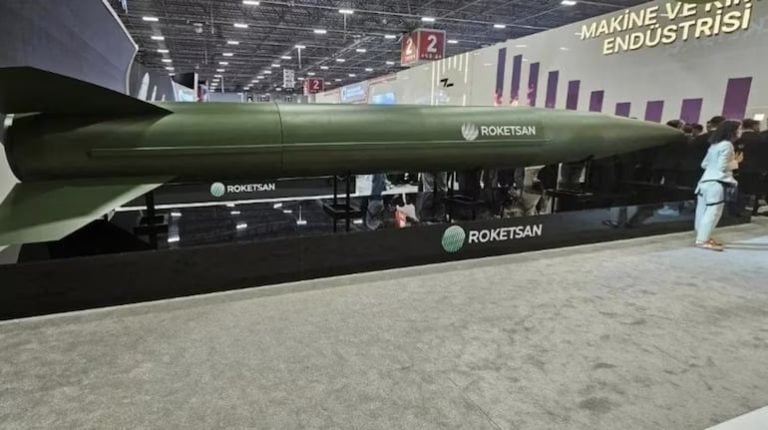In the rapidly evolving realm of military technology, speed has emerged as a pivotal factor enhancing a missile’s ability to elude defenses, shorten reaction times for adversaries, and ensure effective target penetration. By 2025, numerous nations had successfully developed missiles capable of achieving hypersonic speeds, exceeding Mach 5 (approximately 6,174 km/h), thereby transforming modern warfare dynamics. This report delves into the five fastest missiles globally, emphasizing their specifications, capabilities, and strategic importance, underscored by a comparative analysis.
Missiles are classified by their speeds into three categories: subsonic (below Mach 1), supersonic (Mach 1 to Mach 5), and hypersonic (above Mach 5). Hypersonic missiles are particularly revolutionary due to their extreme velocities and, in certain instances, their maneuverability, which makes interception exceptionally difficult.
These advanced weapons serve predominantly for strategic deterrence, often armed with either nuclear or conventional warheads, playing critical roles in the military doctrines of countries such as Russia, China, and the United States. Below is a detailed examination of the five fastest missiles as of 2025, ranked by their maximum speeds based on credible defense intelligence.
The Importance of Speed in Missile Technology
Speed is crucial for missiles for various reasons. Firstly, high velocities significantly enhance a missile’s ability to bypass enemy defenses, rendering interception increasingly complex. The greater a missile’s speed, the less time the adversary has to respond, ultimately increasing the chances of successfully hitting the target.
Moreover, heightened speed contributes to a missile’s effective range and responsiveness, facilitating rapid engagement and deployment during military operations.
The List of the 5 Fastest Missiles in the World
-
Avangard: Revolutionizing Hypersonic Technology
The Russian Avangard missile has emerged as a cornerstone of hypersonic technology. With a staggering maximum speed of Mach 27 (32,200 km/h), its agility allows it to execute rapid maneuvers, making interception nearly impossible. The Avangard boasts superior precision and range, establishing it as a significant force on the battlefield.- Origin: Russia
- Class: Hypersonic Glide Vehicle (HGV)
- Range: >6000 km
- Warhead: Nuclear (up to 2 MT option)
- Status: In service
-
DF-41: China’s Swift Strategic Deterrent
The Dongfeng-41 (DF-41) of China, a ballistic missile, has garnered significant attention from military analysts globally. Its maximum speed of Mach 25 (30,600 km/h) positions it among the speediest missiles in China’s arsenal, complemented by an impressive range and capability to carry multiple warheads.- Origin: China
- Class: Intercontinental Ballistic Missile (ICBM)
- Length: 20-22 m
- Payload: 2,500 kg
- Warhead: Up to 10 nuclear warheads (MIRV)
- Range: 12,000-15,000 km
- Status: In service
-
Trident 2: Unmatched Submarine-launched Precision
The Trident 2, a cornerstone of the U.S. naval defense, is recognized for its remarkable speed and accuracy as a submarine-launched ballistic missile. Exceeding speeds of Mach 24 (29,654 km/h), it serves as a fundamental component of the U.S. Navy’s sea-based nuclear deterrent.- Origin: United States
- Class: Submarine Launched Ballistic Missile (SLBM)
- Length: 13.42 m
- Payload: 2,800 kg
- Warhead: Up to 8 MIRV Mk 4 or Mk 5 warheads
- Range: 2,000-12,000 km
- Status: In service (1990-present)
-
Minuteman 3: America’s Intercontinental Ballistic Missile
The Minuteman 3, another vital element of the U.S. ballistic missile arsenal, boasts a top speed of approximately Mach 23 (28,200 km/h). Its critical role in America’s intercontinental ballistic missile (ICBM) capabilities provides rapid, precise response options.- Origin: United States
- Class: Intercontinental Ballistic Missile (ICBM)
- Length: 18.2 m
- Payload: Up to 3 Mk 12A; 1 Mk 21 RV with penetration aids
- Warhead: W78 (335 kT), W87 (300 kT)
- Range: 13,000 km
- Status: Operational
- RS-28 Sarmat: Russia’s Heavyweight Hypersonic Missile
The RS-28 Sarmat, often referred to as “Satan 2,” stands as a heavyweight among hypersonic missiles developed in Russia. Though its exact speed remains classified, estimates suggest it exceeds Mach 20.4 (25,500 km/h). Designed to carry various warheads and penetrate present and future missile defenses, the RS-28 Sarmat exemplifies a considerable advancement in Russian military capabilities.- Origin: Russia
- Class: Intercontinental Ballistic Missile (ICBM)
- Length: 35.3 m
- Payload: 10,000 kg
- Warhead: Nuclear (MIRV or glide vehicles)
- Range: 10,000-18,000 km
- Status: Operational
Strategic and Technological Insights
Speed and Maneuverability
Hypersonic missiles, such as the Avangard and certain versions of the RS-28 Sarmat, challenge interception efforts due to their high velocities and maneuverability that allows mid-flight trajectory adjustments. Traditional ballistic missiles—like the DF-41, Trident 2, and Minuteman 3—might follow predictable paths, yet their hypersonic velocities still minimize the time frame for defensive reactions.
Strategic Deterrence
These missiles are integral to nuclear deterrence strategies, ensuring nations possess the capacity to retaliate even if primary forces are compromised. For instance, the submarine-based Trident 2 offers a concealed, resilient launch platform, while the DF-41’s MIRV capability enhances multi-strike capabilities, fortifying deterrent postures.
Technological Advancements
The development of hypersonic glide vehicles (HGVs) such as the Avangard marks a substantial milestone in missile technology. Unlike traditional ICBMs, HGVs are capable of rapid maneuvering at high speeds, making them less predictable. The incorporation of advanced guidance systems and solid-fuel propulsion in missiles like the DF-41 enhances reliability and rapid deployment capabilities.
Global Security Implications
The global spread of hypersonic and high-speed ballistic missiles poses significant concerns for international stability. Their capability to strike with minimal warning could intensify conflicts without robust arms control mechanisms in place. The presence of these missiles in the military arsenals of Russia, China, and the United States underscores the urgent need for diplomatic initiatives aimed at managing their deployment and preventing a new arms race.
Additional Considerations
While these top five missiles dominate in speed, others, such as India’s Agni-V (Mach 24, 29,400 km/h), stand as worthy contenders but did not make this list due to slightly lower speeds or inconsistent reporting. Emerging systems like the BrahMos-II (Mach 7–8) show potential but remain under development as of 2025. Notably, the U.S. is also engaged in advancing hypersonic weapons, yet no operational systems have surpassed the speed claims of the Trident 2 or Minuteman 3.
Conclusion
The fastest missiles of 2025—Avangard, DF-41, Trident 2, Minuteman 3, and RS-28 Sarmat—represent the zenith of military technological advancement, merging extreme speed with long-range capabilities and devastating warheads. These weapons exemplify the strategic priorities of Russia, China, and the United States in sustaining robust deterrent capabilities. As missile technology continues to advance, the importance of international cooperation and arms control cannot be overstated in fostering global stability amidst these powerful armaments.

















